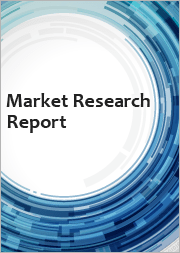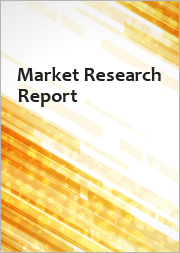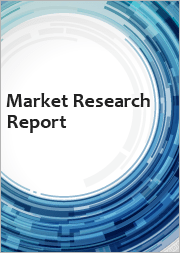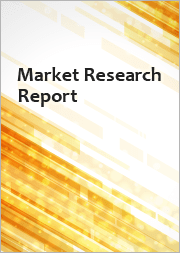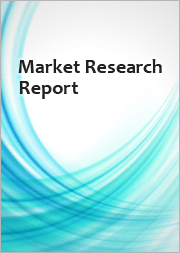
|
시장보고서
상품코드
1578806
세계의 PDGFR 억제제 시장 : 적응증, 약제 유형, 투여 방법, 최종 사용자별 예측(2025-2030년)PDGFR Inhibitor Market by Therapeutic Indication (Gastrointestinal Stromal Tumors, Glioblastoma, Leukemia), Drug Type (Combination Therapy, Monotherapy), Mode Of Administration, End User - Global Forecast 2025-2030 |
||||||
PDGFR 억제제 시장은 2023년에 32억 1,000만 달러로 평가되었고, 2024년에는 34억 3,000만 달러에 이를 것으로 예상되며, 복합 연간 성장률(CAGR) 5.21%로 성장하여, 2030년에는 45억 9,000만 달러에 달할 것으로 예상됩니다.
PDGFR(혈소판 유래 성장 인자 수용체) 억제제의 범위와 정의는 PDGFR 신호 전달 경로를 표적으로 하는 것과 관련이 있습니다. 이 경로는 세포의 증식, 생존, 이동에 중요한 역할을 하며 암과 섬유화 질환과 같은 치료법으로 유망한 수단을 제공합니다. 이러한 억제제는 신경교아종, 전립선암 등의 악성 종양이나 피부 섬유육종 원형종과 같은 드문 병태를 치료할 가능성이 있기 때문에 필요합니다. 신호 전달 경로를 억제함으로써, 이러한 약물은 주요 용도인 종양의 성장과 전이를 억제합니다. PDGFR 억제제의 최종 용도는 임상시험 및 치료 현장에서 이러한 약물을 사용하는 병원 및 연구 기관과 함께 제약 및 생명 공학 부문에 널리 퍼져 있습니다.
| 주요 시장 통계 | |
|---|---|
| 기준년(2023) | 32억 1,000만 달러 |
| 예측년(2024) | 34억 3,000만 달러 |
| 예측년(2030) | 45억 9,000만 달러 |
| 복합 연간 성장률(CAGR)(%) | 5.21% |
시장 인사이트에 따르면 성장의 주요 원동력은 종양성 질환의 유병률 증가, 다액 연구개발 투자, 신규 암 치료에 대한 긴급한 요구입니다., 시장 확대를 더욱 촉진합니다 새로운 비즈니스 기회는 병용 요법의 개발과 내성 종양 유전체학의 타겟팅에 있습니다. 이 연구 및 생명 공학 기업과의 전략적 제휴에 투자함으로써 이들을 활용할 수 있습니다. 제한 또한 대체 요법과 경쟁 압력과 종양의 내성이 있으며 지속적인 혁신이 필요합니다.
기술 혁신과 연구를 촉진하기 위해서는 PDGFR 억제제의 효능과 안전성 프로파일을 개선하기위한 분자 메커니즘과 새로운 바이오 마커를 찾는 것이 가장 중요합니다. 가용성을 높이고 선택성이 높은 억제제 개발에 중점을 둔 것으로 나타났습니다. 격렬하게 주요 기업은 파이프라인을 강화하기 위해 전략적 합병, 인수, 제휴를 통해 항상 우위를 추구하고 있습니다., 시장의 복잡성을 능숙하게 극복하고 새로운 동향과 암멧 의료 요구를 활용하는 기업에 큰 성장 기회를 제공합니다.
시장 역학 : 빠르게 진화하는 PDGFR 억제제 시장의 주요 시장 인사이트 공개
PDGFR 억제제 시장은 수요 및 공급의 역동적인 상호작용에 의해 변모하고 있습니다. 이러한 시장 역학의 진화를 이해함으로써 기업은 충분한 정보를 바탕으로 투자결정, 전략적 결정 정밀화, 새로운 비즈니스 기회 획득에 대비할 수 있습니다. 이러한 동향을 종합적으로 파악함으로써 기업은 정치적, 지리적, 기술적, 사회적, 경제적 영역에 걸친 다양한 위험을 완화할 수 있으며, 소비자 행동과 그것이 제조 비용과 구매 동향에 미치는 영향을보다 명확하게 이해할 수 있습니다.
Porter's Five Forces : PDGFR 억제제 시장을 탐색하는 전략 도구
Porter's Five Forces Framework는 시장 상황 및 경쟁 구도를 파악하는 중요한 도구입니다. Porter's Five Forces Framework는 기업의 경쟁력을 평가하고 전략적 기회를 탐구하는 명확한 기술을 제공합니다. 이 프레임워크 기업이 시장 내 세력도를 평가하고 신규 사업의 수익성을 결정하는 데 도움이 됩니다. 이러한 인사이트을 통해 기업은 자사의 강점을 활용하고, 약점을 해결하고, 잠재적인 과제를 피할 수 있으며, 보다 강인한 시장에서의 포지셔닝을 보장할 수 있습니다.
PESTLE 분석 : PDGFR 억제제 시장에서 외부로부터의 영향 파악
외부 거시 환경 요인은 PDGFR 억제제 시장의 성과 역학을 형성하는데 매우 중요한 역할을 합니다. 정치적, 경제적, 사회적, 기술적, 법적, 환경적 요인 분석은 이러한 영향을 탐색하는 데 필요한 정보를 제공합니다. PESTLE 요인을 조사함으로써 기업은 잠재적인 위험과 기회를 더 잘 이해할 수 있습니다. 이 분석을 통해 기업은 규제, 소비자 선호, 경제 동향의 변화를 예측하고 앞으로 예상되는 적극적인 의사 결정을 할 준비를 할 수 있습니다.
시장 점유율 분석 : : PDGFR 억제제 시장에서 경쟁 구도 파악
PDGFR 억제제 시장의 상세한 시장 점유율 분석을 통해 공급업체의 성과를 종합적으로 평가할 수 있습니다. 기업은 수익, 고객 기반, 성장률 등 주요 지표를 비교하여 경쟁 포지셔닝을 밝힐 수 있습니다. 이 분석을 통해 시장 집중, 단편화, 통합 동향을 밝혀내고 벤더들은 경쟁이 치열해지는 가운데 자사의 지위를 높이는 전략적 의사 결정을 내리는 데 필요한 지식을 얻을 수 있습니다.
FPNV 포지셔닝 매트릭스 : PDGFR 억제제 시장에서 공급업체의 성능 평가
FPNV 포지셔닝 매트릭스는 PDGFR 억제제 시장에서 공급업체를 평가하는 중요한 도구입니다. 이 행렬을 통해 비즈니스 조직은 공급업체의 비즈니스 전략과 제품 만족도를 기준으로 평가하여 목표에 맞는 충분한 정보를 바탕으로 의사 결정을 내릴 수 있습니다. 네 가지 사분면을 통해 공급업체를 명확하고 정확하게 부문화하고 전략 목표에 가장 적합한 파트너 및 솔루션을 파악할 수 있습니다.
전략 분석 및 추천: PDGFR 억제제 시장에서 성공을 위한 길을 그리기
PDGFR 억제제 시장의 전략 분석은 시장에서의 현장 강화를 목표로 하는 기업에 필수적입니다. 주요 자원, 역량 및 성과 지표를 검토함으로써 기업은 성장 기회를 파악하고 개선을 위해 노력할 수 있습니다. 이러한 접근 방식을 통해 경쟁 구도에서 과제를 극복하고 새로운 비즈니스 기회를 활용하여 장기적인 성공을 거둘 수 있는 체제를 구축할 수 있습니다.
이 보고서는 주요 관심 분야를 포괄하는 시장의 종합적인 분석을 제공합니다.
1. 시장 침투도 : 현재 시장 환경의 상세한 검토, 주요 기업에 의한 광범위한 데이터, 시장에서의 도달범위 및 전반적인 영향력을 평가합니다.
2. 시장 개척도 : 신흥 시장의 성장 기회를 파악하고 기존 분야의 확장 가능성을 평가하며 미래 성장을 위한 전략적 로드맵을 제공합니다.
3. 시장 다양화 : 최근 제품 출시, 미개척 지역, 업계의 주요 진보, 시장을 형성하는 전략적 투자를 분석합니다.
4. 경쟁 평가 및 정보 : 경쟁 구도를 철저히 분석하여 시장 점유율, 사업 전략, 제품 포트폴리오, 인증, 규제 당국 승인, 특허 동향, 주요 기업의 기술 진보 등을 검증합니다.
5. 제품 개발 및 혁신 : 미래 시장 성장을 가속할 것으로 예상되는 최첨단 기술, R&D 활동, 제품 혁신을 강조합니다.
또한 이해관계자가 충분한 정보를 얻고 의사결정을 할 수 있도록 중요한 질문에 대답하고 있습니다.
1. 현재 시장 규모와 향후 성장 예측은?
2. 최고의 투자 기회를 제공하는 제품, 부문 및 지역은 어디입니까?
3. 시장을 형성하는 주요 기술 동향과 규제의 영향은?
4. 주요 벤더의 시장 점유율과 경쟁 포지션은?
5. 벤더 시장 진입, 철수 전략의 원동력이 되는 수익원과 전략적 기회는 무엇인가?
목차
제1장 서문
제2장 조사 방법
제3장 주요 요약
제4장 시장 개요
제5장 시장 인사이트
- 시장 역학
- 성장 촉진요인
- PDGFR 억제제 용도에 있어서의 대대적인 연구 개발에 의해 임상 응용이 확대
- 주요 시장에서 새로운 PDGFR 억제제에 대한 규제 지원 강화 및 신속한 승인
- 제약 대기업의 전략적 제휴에 의해 PDGFR 억제제의 광범위한 유통이 촉진된다
- PDGFR 억제제의 효능과 환자의 컴플라이언스를 개선하는 약물전달 시스템의 기술적 진보
- 성장 억제요인
- PDGFR 억제제의 장점과 용도에 관한 헬스케어 종사자의 인식 부족
- 유통상의 과제에 의해 신흥 시장에서는 PDGFR 억제제의 입수가 한정되어 있다
- 기회
- PDGFR 억제제 개발에 있어서의 바이오 의약품의 진보를 추진하는 협력 관계
- 충족되지 않은 의료 요구에 대응하기 위해 PDGFR 억제제의 임상시험을 세계 규모로 확대
- 희귀질환의 승인을 가속하기 위한 규제상의 인센티브
- 과제
- 대체요법으로부터의 경쟁압력에 의해 PDGFR 억제제 시장 점유율이 감소
- 지적재산권과 특허분쟁이 PDGFR 억제제 시장 역학을 방해하고 있다
- 성장 촉진요인
- 시장 세분화 분석
- Porter's Five Forces 분석
- PESTEL 분석
- 정치적
- 경제적
- 사회적
- 기술적
- 법적
- 환경적
제6장 PDGFR 억제제 시장 치료 : 적응증별
- 소화관 간질 종양
- 신경교아종
- 백혈병
제7장 PDGFR 억제제 시장 : 약제 유형별
- 병용 요법
- 단독요법
제8장 PDGFR 억제제 시장 : 투여 방법별
- 정맥내
- 경구
제9장 PDGFR 억제제 시장 : 최종 사용자별
- 병원
- 조사 및 학술기관
- 전문 클리닉
제10장 아메리카의 PDGFR 억제제 시장
- 아르헨티나
- 브라질
- 캐나다
- 멕시코
- 미국
제11장 아시아태평양의 PDGFR 억제제 시장
- 호주
- 중국
- 인도
- 인도네시아
- 일본
- 말레이시아
- 필리핀
- 싱가포르
- 한국
- 대만
- 태국
- 베트남
제12장 유럽, 중동 및 아프리카의 PDGFR 억제제 시장
- 덴마크
- 이집트
- 핀란드
- 프랑스
- 독일
- 이스라엘
- 이탈리아
- 네덜란드
- 나이지리아
- 노르웨이
- 폴란드
- 카타르
- 러시아
- 사우디아라비아
- 남아프리카
- 스페인
- 스웨덴
- 스위스
- 터키
- 아랍에미리트(UAE)
- 영국
제13장 경쟁 구도
- 시장 점유율 분석(2023년)
- FPNV 포지셔닝 매트릭스(2023년)
- 경쟁 시나리오 분석
- 전략 분석과 제안
기업 목록
- Bayer AG
- Blueprint Medicines Corporation
- Boehringer Ingelheim International GmbH
- Bristol Myers Squibb
- Deciphera Pharmaceuticals, Inc.
- Eli Lilly and Company
- Exelixis, Inc.
- F. Hoffmann-La Roche Ltd.
- Gilead Sciences, Inc.
- GlaxoSmithKline
- Incyte Corporation
- MedChemExpress
- Merck KGaA
- Novartis Pharmaceuticals Corporation
- Pfizer Inc.
- R&D Systems, Inc.
- Santa Cruz Biotechnology, Inc.
- TargetMol Chemicals Inc.
- Tocris Bioscience
- Zai Lab Limited
The PDGFR Inhibitor Market was valued at USD 3.21 billion in 2023, expected to reach USD 3.43 billion in 2024, and is projected to grow at a CAGR of 5.21%, to USD 4.59 billion by 2030.
The scope and definition of PDGFR (Platelet-Derived Growth Factor Receptor) inhibitors revolve around targeting the PDGFR signaling pathway, which is crucial for cell proliferation, survival, and migration, thus providing treatment avenues for diseases like cancer and fibrotic conditions. These inhibitors are necessary due to their therapeutic potential in managing malignancies such as glioblastomas, prostate cancer, and rarer conditions like dermatofibrosarcoma protuberans. By impeding the signaling pathways, these drugs curb tumor growth and metastasis, which are primary applications. The end-use scope of PDGFR inhibitors predominantly spans the pharmaceutical and biotechnology sectors, alongside hospitals and research institutions that employ these drugs in clinical trials and therapeutic settings.
| KEY MARKET STATISTICS | |
|---|---|
| Base Year [2023] | USD 3.21 billion |
| Estimated Year [2024] | USD 3.43 billion |
| Forecast Year [2030] | USD 4.59 billion |
| CAGR (%) | 5.21% |
Market insights indicate that the growth is primarily driven by the increasing prevalence of oncological disorders, significant R&D investments, and the urgent need for novel cancer therapies. Technological advancements and personalized medicine trends further catalyze market expansion. Emerging opportunities lie within the development of combination therapies and targeting resistant tumor genomics. Companies can capitalize on these by investing in collaborative research and strategic alliances with biotech firms. However, stringent regulatory approvals, high development costs, and potential side effects pose significant challenges, restricting market growth. There is also the competitive pressure from alternative therapies and resistance development in tumors, which necessitates continuous innovation.
For fostering innovation and research, exploring molecular mechanisms and novel biomarkers for better efficacy and safety profiles of PDGFR inhibitors is paramount. Market growth insight reveals a focus on developing less toxic, more selective inhibitors with enhanced bioavailability. The nature of the PDGFR inhibitor market is competitive, with key players continuously seeking edges through strategic mergers, acquisitions, and collaborations to boost their pipelines. With these dynamics, the PDGFR inhibitor market remains poised for steady growth, offering significant opportunities for companies that skillfully navigate the market's complexities and capitalize on emerging trends and unmet medical needs.
Market Dynamics: Unveiling Key Market Insights in the Rapidly Evolving PDGFR Inhibitor Market
The PDGFR Inhibitor Market is undergoing transformative changes driven by a dynamic interplay of supply and demand factors. Understanding these evolving market dynamics prepares business organizations to make informed investment decisions, refine strategic decisions, and seize new opportunities. By gaining a comprehensive view of these trends, business organizations can mitigate various risks across political, geographic, technical, social, and economic domains while also gaining a clearer understanding of consumer behavior and its impact on manufacturing costs and purchasing trends.
- Market Drivers
- Expanding clinical applications owing to substantial research and development in PDGFR inhibitor uses
- Enhanced regulatory support and fast-track approvals for new PDGFR inhibiting drugs in key markets
- Strategic collaborations between pharmaceutical giants aiding in extensive distribution of PDGFR inhibitors
- Technological advancements in drug delivery systems improving the efficacy and patient compliance of PDGFR inhibitors
- Market Restraints
- Lack of awareness among healthcare professionals about the benefits and uses of PDGFR inhibitors
- Limited availability of PDGFR inhibitors in emerging markets due to distribution challenges
- Market Opportunities
- Collaborative partnerships driving biopharmaceutical advancements in PDGFR inhibitor development
- Expanding global clinical trials for PDGFR inhibitors to address unmet medical needs
- Regulatory incentives for accelerated PDGFR inhibitor approvals in rare diseases
- Market Challenges
- Competitive pressure from alternative therapies reducing market share for PDGFR inhibitors
- Intellectual property and patent disputes hindering market dynamics for PDGFR inhibitors
Porter's Five Forces: A Strategic Tool for Navigating the PDGFR Inhibitor Market
Porter's five forces framework is a critical tool for understanding the competitive landscape of the PDGFR Inhibitor Market. It offers business organizations with a clear methodology for evaluating their competitive positioning and exploring strategic opportunities. This framework helps businesses assess the power dynamics within the market and determine the profitability of new ventures. With these insights, business organizations can leverage their strengths, address weaknesses, and avoid potential challenges, ensuring a more resilient market positioning.
PESTLE Analysis: Navigating External Influences in the PDGFR Inhibitor Market
External macro-environmental factors play a pivotal role in shaping the performance dynamics of the PDGFR Inhibitor Market. Political, Economic, Social, Technological, Legal, and Environmental factors analysis provides the necessary information to navigate these influences. By examining PESTLE factors, businesses can better understand potential risks and opportunities. This analysis enables business organizations to anticipate changes in regulations, consumer preferences, and economic trends, ensuring they are prepared to make proactive, forward-thinking decisions.
Market Share Analysis: Understanding the Competitive Landscape in the PDGFR Inhibitor Market
A detailed market share analysis in the PDGFR Inhibitor Market provides a comprehensive assessment of vendors' performance. Companies can identify their competitive positioning by comparing key metrics, including revenue, customer base, and growth rates. This analysis highlights market concentration, fragmentation, and trends in consolidation, offering vendors the insights required to make strategic decisions that enhance their position in an increasingly competitive landscape.
FPNV Positioning Matrix: Evaluating Vendors' Performance in the PDGFR Inhibitor Market
The Forefront, Pathfinder, Niche, Vital (FPNV) Positioning Matrix is a critical tool for evaluating vendors within the PDGFR Inhibitor Market. This matrix enables business organizations to make well-informed decisions that align with their goals by assessing vendors based on their business strategy and product satisfaction. The four quadrants provide a clear and precise segmentation of vendors, helping users identify the right partners and solutions that best fit their strategic objectives.
Strategy Analysis & Recommendation: Charting a Path to Success in the PDGFR Inhibitor Market
A strategic analysis of the PDGFR Inhibitor Market is essential for businesses looking to strengthen their global market presence. By reviewing key resources, capabilities, and performance indicators, business organizations can identify growth opportunities and work toward improvement. This approach helps businesses navigate challenges in the competitive landscape and ensures they are well-positioned to capitalize on newer opportunities and drive long-term success.
Key Company Profiles
The report delves into recent significant developments in the PDGFR Inhibitor Market, highlighting leading vendors and their innovative profiles. These include Bayer AG, Blueprint Medicines Corporation, Boehringer Ingelheim International GmbH, Bristol Myers Squibb, Deciphera Pharmaceuticals, Inc., Eli Lilly and Company, Exelixis, Inc., F. Hoffmann-La Roche Ltd., Gilead Sciences, Inc., GlaxoSmithKline, Incyte Corporation, MedChemExpress, Merck KGaA, Novartis Pharmaceuticals Corporation, Pfizer Inc., R&D Systems, Inc., Santa Cruz Biotechnology, Inc., TargetMol Chemicals Inc., Tocris Bioscience, and Zai Lab Limited.
Market Segmentation & Coverage
This research report categorizes the PDGFR Inhibitor Market to forecast the revenues and analyze trends in each of the following sub-markets:
- Based on Therapeutic Indication, market is studied across Gastrointestinal Stromal Tumors, Glioblastoma, and Leukemia.
- Based on Drug Type, market is studied across Combination Therapy and Monotherapy.
- Based on Mode Of Administration, market is studied across Intravenous and Oral.
- Based on End User, market is studied across Hospitals, Research & Academic Institutes, and Specialty Clinics.
- Based on Region, market is studied across Americas, Asia-Pacific, and Europe, Middle East & Africa. The Americas is further studied across Argentina, Brazil, Canada, Mexico, and United States. The United States is further studied across California, Florida, Illinois, New York, Ohio, Pennsylvania, and Texas. The Asia-Pacific is further studied across Australia, China, India, Indonesia, Japan, Malaysia, Philippines, Singapore, South Korea, Taiwan, Thailand, and Vietnam. The Europe, Middle East & Africa is further studied across Denmark, Egypt, Finland, France, Germany, Israel, Italy, Netherlands, Nigeria, Norway, Poland, Qatar, Russia, Saudi Arabia, South Africa, Spain, Sweden, Switzerland, Turkey, United Arab Emirates, and United Kingdom.
The report offers a comprehensive analysis of the market, covering key focus areas:
1. Market Penetration: A detailed review of the current market environment, including extensive data from top industry players, evaluating their market reach and overall influence.
2. Market Development: Identifies growth opportunities in emerging markets and assesses expansion potential in established sectors, providing a strategic roadmap for future growth.
3. Market Diversification: Analyzes recent product launches, untapped geographic regions, major industry advancements, and strategic investments reshaping the market.
4. Competitive Assessment & Intelligence: Provides a thorough analysis of the competitive landscape, examining market share, business strategies, product portfolios, certifications, regulatory approvals, patent trends, and technological advancements of key players.
5. Product Development & Innovation: Highlights cutting-edge technologies, R&D activities, and product innovations expected to drive future market growth.
The report also answers critical questions to aid stakeholders in making informed decisions:
1. What is the current market size, and what is the forecasted growth?
2. Which products, segments, and regions offer the best investment opportunities?
3. What are the key technology trends and regulatory influences shaping the market?
4. How do leading vendors rank in terms of market share and competitive positioning?
5. What revenue sources and strategic opportunities drive vendors' market entry or exit strategies?
Table of Contents
1. Preface
- 1.1. Objectives of the Study
- 1.2. Market Segmentation & Coverage
- 1.3. Years Considered for the Study
- 1.4. Currency & Pricing
- 1.5. Language
- 1.6. Stakeholders
2. Research Methodology
- 2.1. Define: Research Objective
- 2.2. Determine: Research Design
- 2.3. Prepare: Research Instrument
- 2.4. Collect: Data Source
- 2.5. Analyze: Data Interpretation
- 2.6. Formulate: Data Verification
- 2.7. Publish: Research Report
- 2.8. Repeat: Report Update
3. Executive Summary
4. Market Overview
5. Market Insights
- 5.1. Market Dynamics
- 5.1.1. Drivers
- 5.1.1.1. Expanding clinical applications owing to substantial research and development in PDGFR inhibitor uses
- 5.1.1.2. Enhanced regulatory support and fast-track approvals for new PDGFR inhibiting drugs in key markets
- 5.1.1.3. Strategic collaborations between pharmaceutical giants aiding in extensive distribution of PDGFR inhibitors
- 5.1.1.4. Technological advancements in drug delivery systems improving the efficacy and patient compliance of PDGFR inhibitors
- 5.1.2. Restraints
- 5.1.2.1. Lack of awareness among healthcare professionals about the benefits and uses of PDGFR inhibitors
- 5.1.2.2. Limited availability of PDGFR inhibitors in emerging markets due to distribution challenges
- 5.1.3. Opportunities
- 5.1.3.1. Collaborative partnerships driving biopharmaceutical advancements in PDGFR inhibitor development
- 5.1.3.2. Expanding global clinical trials for PDGFR inhibitors to address unmet medical needs
- 5.1.3.3. Regulatory incentives for accelerated PDGFR inhibitor approvals in rare diseases
- 5.1.4. Challenges
- 5.1.4.1. Competitive pressure from alternative therapies reducing market share for PDGFR inhibitors
- 5.1.4.2. Intellectual property and patent disputes hindering market dynamics for PDGFR inhibitors
- 5.1.1. Drivers
- 5.2. Market Segmentation Analysis
- 5.3. Porter's Five Forces Analysis
- 5.3.1. Threat of New Entrants
- 5.3.2. Threat of Substitutes
- 5.3.3. Bargaining Power of Customers
- 5.3.4. Bargaining Power of Suppliers
- 5.3.5. Industry Rivalry
- 5.4. PESTLE Analysis
- 5.4.1. Political
- 5.4.2. Economic
- 5.4.3. Social
- 5.4.4. Technological
- 5.4.5. Legal
- 5.4.6. Environmental
6. PDGFR Inhibitor Market, by Therapeutic Indication
- 6.1. Introduction
- 6.2. Gastrointestinal Stromal Tumors
- 6.3. Glioblastoma
- 6.4. Leukemia
7. PDGFR Inhibitor Market, by Drug Type
- 7.1. Introduction
- 7.2. Combination Therapy
- 7.3. Monotherapy
8. PDGFR Inhibitor Market, by Mode Of Administration
- 8.1. Introduction
- 8.2. Intravenous
- 8.3. Oral
9. PDGFR Inhibitor Market, by End User
- 9.1. Introduction
- 9.2. Hospitals
- 9.3. Research & Academic Institutes
- 9.4. Specialty Clinics
10. Americas PDGFR Inhibitor Market
- 10.1. Introduction
- 10.2. Argentina
- 10.3. Brazil
- 10.4. Canada
- 10.5. Mexico
- 10.6. United States
11. Asia-Pacific PDGFR Inhibitor Market
- 11.1. Introduction
- 11.2. Australia
- 11.3. China
- 11.4. India
- 11.5. Indonesia
- 11.6. Japan
- 11.7. Malaysia
- 11.8. Philippines
- 11.9. Singapore
- 11.10. South Korea
- 11.11. Taiwan
- 11.12. Thailand
- 11.13. Vietnam
12. Europe, Middle East & Africa PDGFR Inhibitor Market
- 12.1. Introduction
- 12.2. Denmark
- 12.3. Egypt
- 12.4. Finland
- 12.5. France
- 12.6. Germany
- 12.7. Israel
- 12.8. Italy
- 12.9. Netherlands
- 12.10. Nigeria
- 12.11. Norway
- 12.12. Poland
- 12.13. Qatar
- 12.14. Russia
- 12.15. Saudi Arabia
- 12.16. South Africa
- 12.17. Spain
- 12.18. Sweden
- 12.19. Switzerland
- 12.20. Turkey
- 12.21. United Arab Emirates
- 12.22. United Kingdom
13. Competitive Landscape
- 13.1. Market Share Analysis, 2023
- 13.2. FPNV Positioning Matrix, 2023
- 13.3. Competitive Scenario Analysis
- 13.4. Strategy Analysis & Recommendation
Companies Mentioned
- 1. Bayer AG
- 2. Blueprint Medicines Corporation
- 3. Boehringer Ingelheim International GmbH
- 4. Bristol Myers Squibb
- 5. Deciphera Pharmaceuticals, Inc.
- 6. Eli Lilly and Company
- 7. Exelixis, Inc.
- 8. F. Hoffmann-La Roche Ltd.
- 9. Gilead Sciences, Inc.
- 10. GlaxoSmithKline
- 11. Incyte Corporation
- 12. MedChemExpress
- 13. Merck KGaA
- 14. Novartis Pharmaceuticals Corporation
- 15. Pfizer Inc.
- 16. R&D Systems, Inc.
- 17. Santa Cruz Biotechnology, Inc.
- 18. TargetMol Chemicals Inc.
- 19. Tocris Bioscience
- 20. Zai Lab Limited






